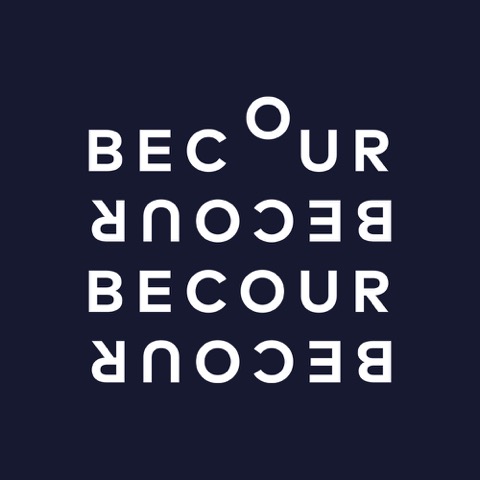

As we approach CHARGE Europe (17-18 October), we’ve been asking our top speakers and partners to reveal their approach to branding in energy. In this article, we speak to Hans Petter Kildal, CEO of Becour.
The interviewers are Friðrik Larsen, Founder and Owner of CHARGE and Sonja Sigríður Jónsdóttir, Conference Producer at CHARGE.
How are digital innovations now helping to prove a brand’s green/clean/ESG credentials and provide ongoing accountability?
One digital innovation that we have been very interested in recently is the potential of blockchain technology to make the market for Energy Attribute Certificates more transparent. We recently led a research project simulating a market where the consumption of these certificates would be recorded on a public blockchain. This could hugely increase the public’s trust in companies’ claims to renewable energy because it would allow them to easily look up the data on the company’s energy consumption. That could include the specific power plant the company bought the certificates from, when the energy was produced and consumed, and so on.
That would be extremely valuable for branding, particularly as companies have been coming under increased scrutiny recently in the media regarding their green energy claims. Accusations of greenwashing are a dangerous pitfall, so anything that can increase public trust in one’s environmental and social governance can strengthen a brand.
Another important innovation in renewable energy consumption is the development of new algorithms. For example, Becour has developed an algorithm that allows the 24/7 matching of electricity consumption and production via our Marbly platform. This algorithm performs the complex calculations needed to achieve hour-by-hour matching for global companies. It must consider ever-changing electricity meter readings across the globe, the output of various renewable energy plants, and calculate how best to distribute the renewable energy certificates from those power plants.
This helps a brand to stand out regarding ESG credentials because the standard is to match renewable energy consumption with ‘old’ production that could have taken place up to a year in advance of consumption. It is of course a powerful statement to be able to confidently claim that you are using renewable energy every hour of every day, as opposed to matching on a yearly basis.
What new business opportunities are you seeing with eMobility disruption?
eMobility is one of the key industries that Becour is focusing on right now, for a few reasons. Firstly, as transport becomes electrified, the whole sector gains the potential for renewable energy matching, and transport is one of the largest sectors out there.
Second, renewable energy is the premise for electrification of the transport sector being a good idea. The purpose of transitioning from fuels like gasoline to electricity is to reduce carbon emissions. Therefore, it is imperative that electric vehicles run on renewables – otherwise the transition has little purpose.
We can see a major opportunity in proving the credibility of renewable energy claims that the transport sector will be increasingly making as electrification progresses. As is the case for many large companies that we work with, we think that many key players in the sector will want to go above and beyond buying the cheapest energy certificates on the market.
Green-tech companies like Becour will be needed, as digital solutions will have to be developed to cover the many different charging points needed for electric cars, for example. These solutions are likely to be fairly complex. Becour has been a market leader in developing innovative solutions such as 24/7 regional matching of electricity, so we are keen to be involved in helping to ensure that electric transport is as impactful and credible as possible.
What tangible value is digital empowerment driving for your business?
Digital empowerment is the backbone of our business. What Becour does is provide a tech-savvy way for consumers to document their renewable energy consumption.
The whole of the market for renewable energy certificates is based on the premise of digitalization. Since electrons cannot be tracked, and therefore the physical ‘renewable electricity’ cannot be tracked, we instead trade digital certificates that represent that renewable electricity.
Becour has developed a tech solution called Marbly that allows the energy consumer to easily and directly choose between renewable power plants, and to buy certificates from those power plants to match their energy consumption. We are increasingly seeing consumers registering for certificates directly on the Marbly platform, with less and less need for people to facilitate the process. As we scale, this becomes more important – so digital empowerment is key.
How much emphasis do you place on emotion versus rationality when building an energy brand? Does “feeling” and emotive resonance have a place within your brand strategy?
Emotional resonance definitely has its place within our brand strategy – though it is always complimented by logic. The core aim of our texts is to persuade, so we base our communications on one of the oldest persuasive techniques out there, which is to appeal to ethos, pathos, and logos.
Ethos refers to the perceived credibility of the speaker, logos is the logic of the argument, and pathos is the emotional reaction that a text sparks. By appealing to all three, one can build a sound and persuasive argument.
We generally try to spark positive emotions, and for that telling a compelling story is important. For example, for each of our power plants, we build a narrative using the unique history of that power plant. One example is the Narva wind farm in Estonia, which is built on an old ash field from an oil shale-fired power plant. That tells a powerful story of – quite literally – building clean alternatives on the ashes of dirty fossil energy. When we spark that sense of hope and progress, of course companies will want to be involved. The best part is that they can source their energy from that exact powerplant and tell the same story to their own customers.

